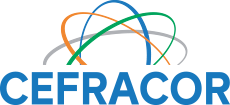Objective
To quantitatively evaluate the corrosion of carbon steel at low corrosion propagation rates (e.g., in reducing underground water environment, which is typically used for the disposal of high-level radioactive waste, the adverse effects of different acid wash solutions were evaluated.
Results
(1) The polished specimen showed very slight weight loss after the acid wash. However, the base metal of corroded specimens also eluted with the corrosion product during the acid washes.
(2) The recommended choice of acid wash solution depends on the degree of corrosion, and these are listed below.
(A) In the case of very slight corrosion, with an average corrosion depth of less than 0.1 mm, acid wash with DAC (Di-ammonium citrate) or the weight gain method is recommended.
(B) For slight corrosion with an average corrosion depth of 1–10 mm, acid wash with TA (Tin antimony) is recommended.
(C) For normal or heavy corrosion with a depth of more than 100 mm, acid wash by HMT (Hexamethylenetetramine) or mechanical removal of the corrosion product with brushes is recommended. Additionally, since HMT shows high acid wash performance, its usage should be avoided in cases of slight corrosion.
(3) It is necessary to evaluate the corrosion product removal method for localized corrosion such as pitting corrosion and crevice corrosion.
asid wash, corrosion, carbon steel
